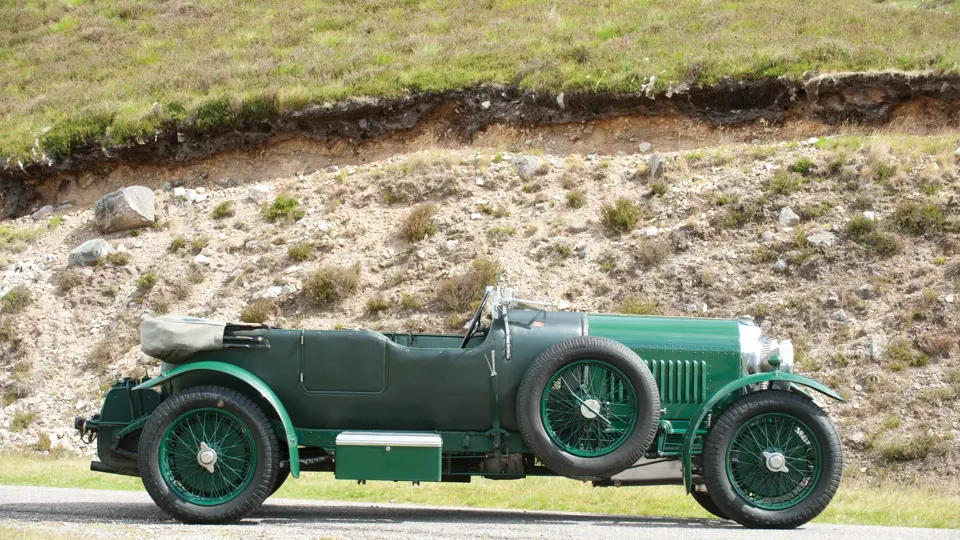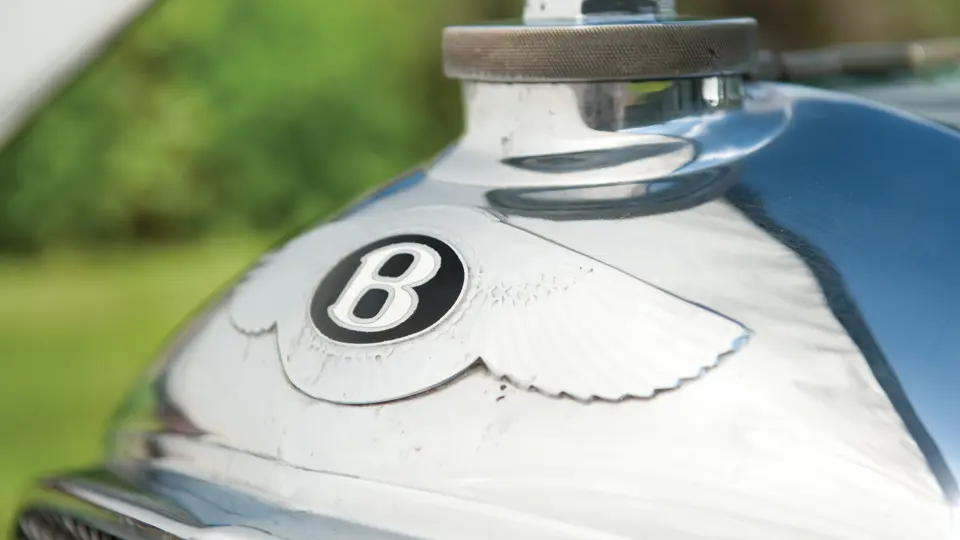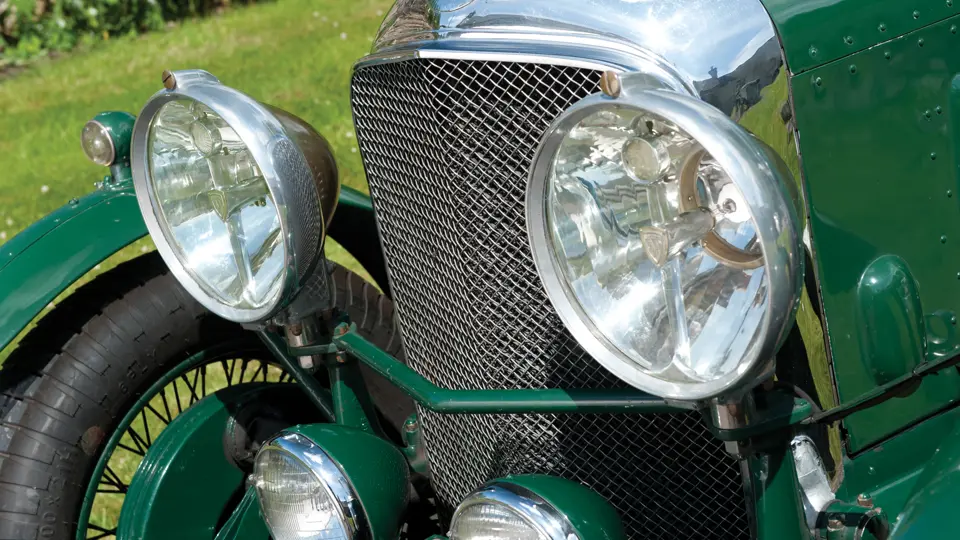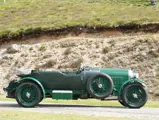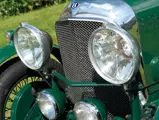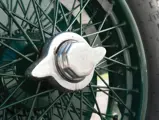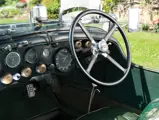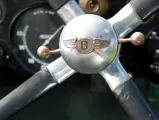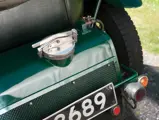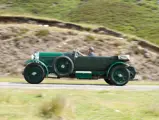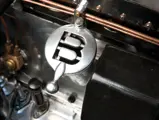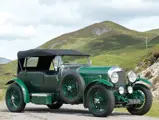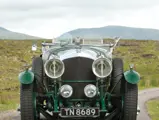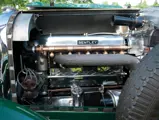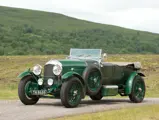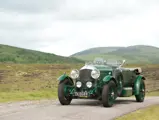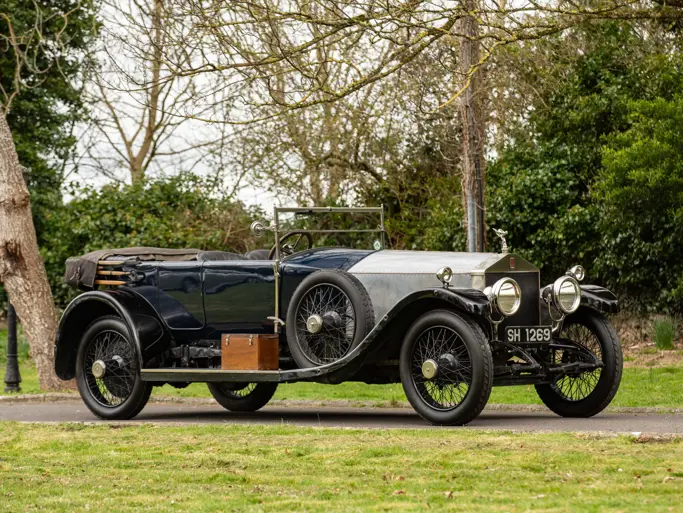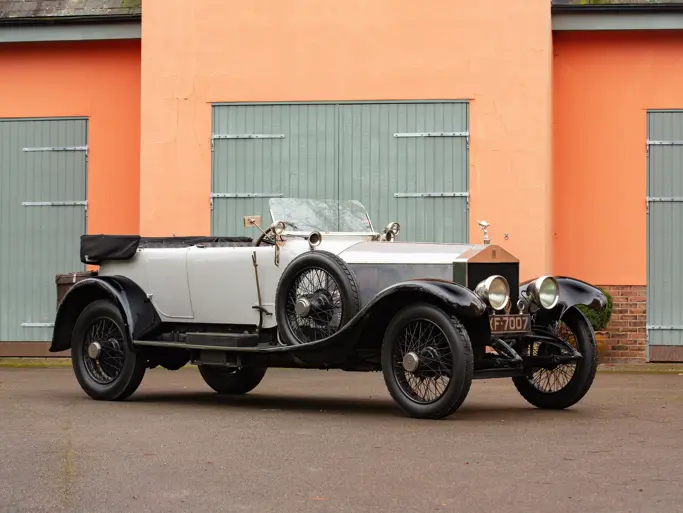100 bhp, 4,398 cc, 16-valve, single overhead cam four-cylinder engine, twin SU carburettors, four-speed manual gearbox, front beam and live rear axle with semi-elliptic springs, and four wheel mechanical drum brakes. Wheelbase: 3,315 mm
Vintage, or “W.O.”, Bentleys were produced between 1919 and 1931 at Cricklewood. The so-called “Derby Bentleys”, which were produced by Rolls-Royce after their purchase of the company out of receivership, share only a badge with their forebears. From the first three-litre car in 1919, until the last eight-litre car in 1931, Bentley was the Ferrari of its day. Vintage Bentleys were powerful and surprisingly easy to drive, once mastery of the “crash” gearbox was achieved.
Like Rolls-Royce, all Bentleys were bodied by independent coachbuilders. Each operational chassis was fitted with a radiator, hood panels, and firewall and then road-tested on public highways prior to being sent to completion for its bodywork. No less than 120 coachbuilders (mostly British) supplied bodies; the most prolific of which was Vanden Plas, which provided 669 bodies from 1922–1931. Bentley’s relationship with Vanden Plas began in 1922, and by 1924, the company bodied 84 Bentleys alone. In 1925, Vanden Plas leased a portion of their premises to Bentley for the latter’s service department, securing their role as the coachbuilder of choice for Bentley.
The new 4½-Litre Bentley became available to the public in late-1927 following the prototype’s debut at the 24 Hours of Le Mans earlier that year. The car broke the lap record prior to the famous (or infamous) White House Corner disaster. As the successor to the 3-Litre, it shared the same bore and stroke as the 6½-Litre, but it retained the shaft-and-helical camshaft drive of the 3-Litre. The 4½-Litre was brought about by the need for greater power and speed, which were required for Bentley to ensure that it would reign supreme at the Circuit de la Sarthe. The new engine quickly proved its worth, and it managed an outright win at Le Mans in 1928. Bentley built a total of 665 units over the model’s lifespan, with almost all constructed on the longer chassis that was first used on the 3-Litre.
The Bentley of the 1920s was a painstakingly crafted vehicle. Though chassis frames were supplied by outside contractors, the balance was slowly and methodically fabricated within the modest brick sheds that sprinkled the Cricklewood site. The average week yielded about six to seven cars, totalling to 300 cars annually. Engines and transmissions were manufactured to exceedingly high standards; each was tested thoroughly before being fitted to a chassis. At such a small rate of production, there was no justification to manufacture series of each and every model, thus keeping costs high and cash flow minimal.
Archived by Bentley Motors and Vanden Plas, and subsequently by clubs like the Bentley Drivers Club and Rolls-Royce Owners’ Club, early Bentleys can often be accurately documented, and the example on sale today is no exception.
The first owner of this 4½-Litre was Gordon Sutherland, who was the son of shipping magnate Sir Arthur Sutherland. He took delivery of the car in February 1929 at the Cricklewood factory, as a 21st birthday present from his father. Gordon and his father would go on to become the owners of the Aston Martin Company in 1932, and Gordon ran the company until 1946, when it was sold to David Brown. Gordon often wrote for the Aston Martin Owners Club magazine, and he fondly remembered his ownership of chassis MR 3376, particularly when he picked up the car on a cold February day: “Never having driven a 4½-Litre, I was a bit worried about starting out on frozen roads on a brand new car…Our departure from Cricklewood was spectacular to say the least”. However, Gordon returned home without incident, and he would later recall that “the next few weeks were dream motoring, and it was fascinating seeing how effortlessly this car performed on well-known roads and at considerably higher speeds than expected”.
Gordon would go on to own the car until 1931, when he was tempted by the Bentley factory to trade it in for a 3-Litre Le Mans replica. This 4½-Litre was sold at that time to a Mrs Bowes, who retained ownership of the car for only one year. The car’s next owner was A.S. Frere Reeves, who owned the car for the next 11 years. A.S. Frere Reeves was connected to Bentley Motors, and it is believed that this ownership lead to the car being directly handled by Bentley dealership H.M. Bentley and Partners. The car wears a different version of the Bentley logo on the boss of the steering wheel, which was H.M. Bentley’s (the older brother of W.O.) way of showing that his dealership handled an individual car.
The car subsequently had two periods of long-term ownership; one of them was from 1942 to 1977, and it was owned by Tom Ryland, vice-president of the Federation of British Vehicle Clubs and an active member of the Bentley Drivers Club from 1977 to 2003. During Ryland’s ownership, the lower wings were changed to the more aggressive Le Mans-style cycle wings, and the car was equipped with the more desirable close ratio D-Type gearbox that was fitted to racing Bentleys.
Describing this car’s use as “regularly exercised” under its current owner would simply be an understatement. This Bentley has covered nearly 5,000 miles each year, during the summer months in rallies and road trips all over the United Kingdom and Europe, and it is a regular at Bentley Driver’ Club events in its native country. Most notably, this car competed in the Mille Miglia in 2006 and returned to follow the rally in 2008, completing both journeys free of trouble. Throughout his ownership, the owner opted to refurbish its original components, ensuring that his prized possession was always functioning as it should.
During the current ownership, all major mechanical components have been overhauled, including a complete re-wire with a period-style cotton cover loom by Teaque, a new hood and differential, a started motor, brakes, and a magneto. In 2010, a Tim Payne overdrive was fitted, which allows 70 mph at 2000 rpm and makes for more economical long-distance motoring.
In 2012, the engine went through a complete refurbishment by noted Bentley specialists, VBE Restorations, at the price of £45,000. During this refurbishment, it was established that the car has a heavy Phoenix crankshaft, Phoenix rods, and a high capacity "Blower"-type oil pump. The car is finished in dark green with matching fabric and Connolly leather, the most iconic colour for Bentleys of this era, and the car’s interior shows signs of use proportional with the level of which it has been enjoyed. The owner also decided to replace the lower dashboard with a redesigned, Le Mans-style dash. However, the original dash, tachometer, clock, and petrol gauge are also included in the sale, and they can easily be reinstalled. Numerous service receipts, letters, and articles that chronicle this Bentley’s ownership are also included with the sale. The car is currently numbered in the usual places: the chassis, differential, near side magneto turret, bonnet, steering column, dash board, and magneto control panel. During the previous ownership, the crank case was replaced, and the correct engine number has been re-stamped.
This 4½-Litre Bentley is certainly an iconic automobile that holds a significant place in motorsport. This particular example is very well documented, as it is accompanied in this sale by a thick binder of correspondence with previous owners, as well as period photography and maintenance records from the Bentley factory.




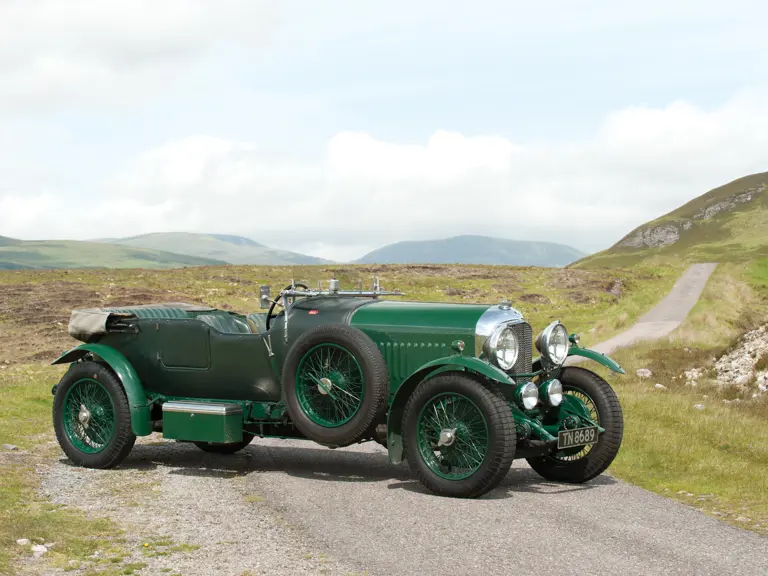
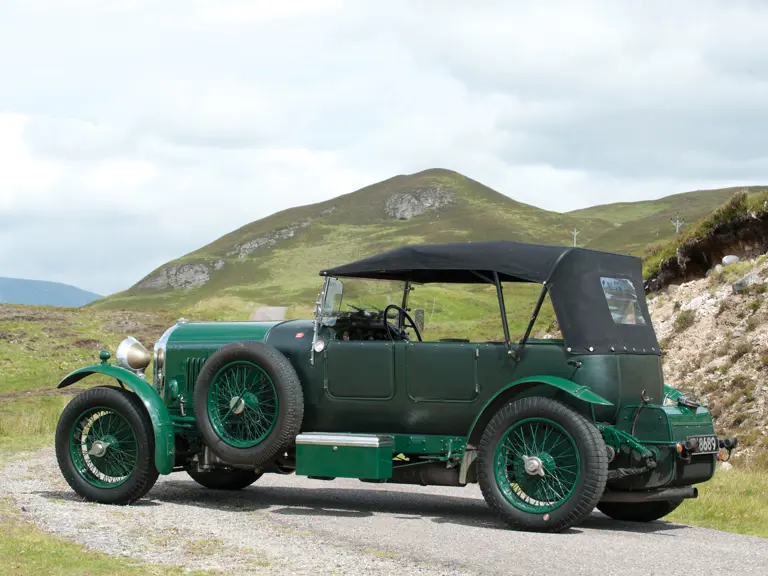
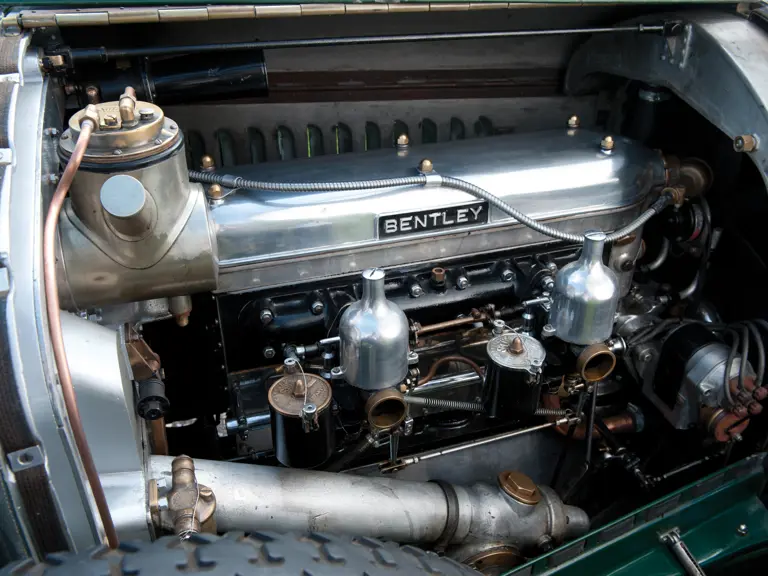
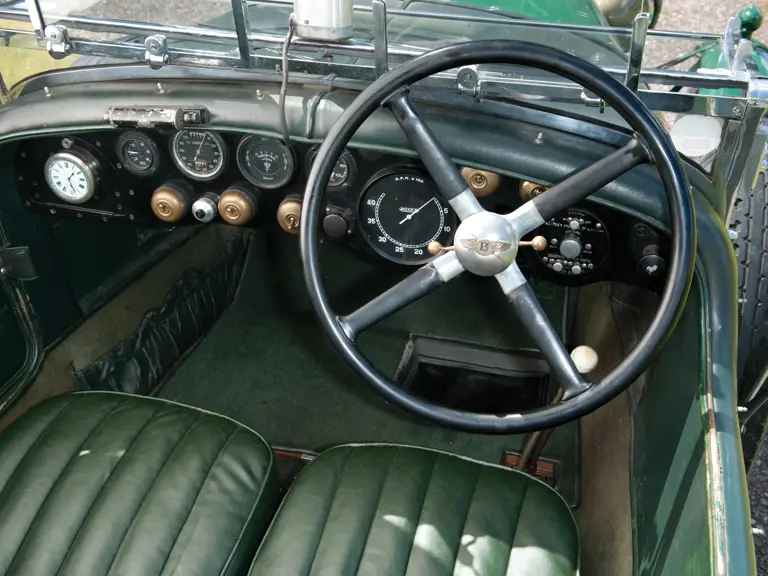
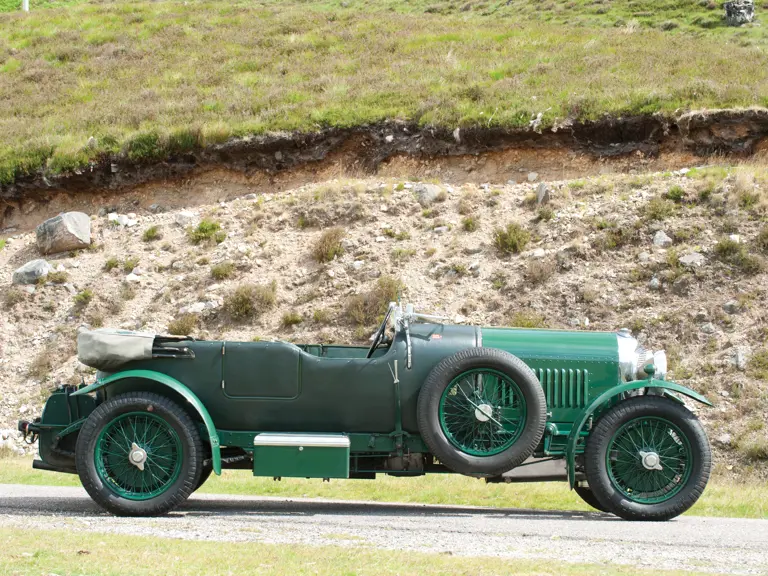
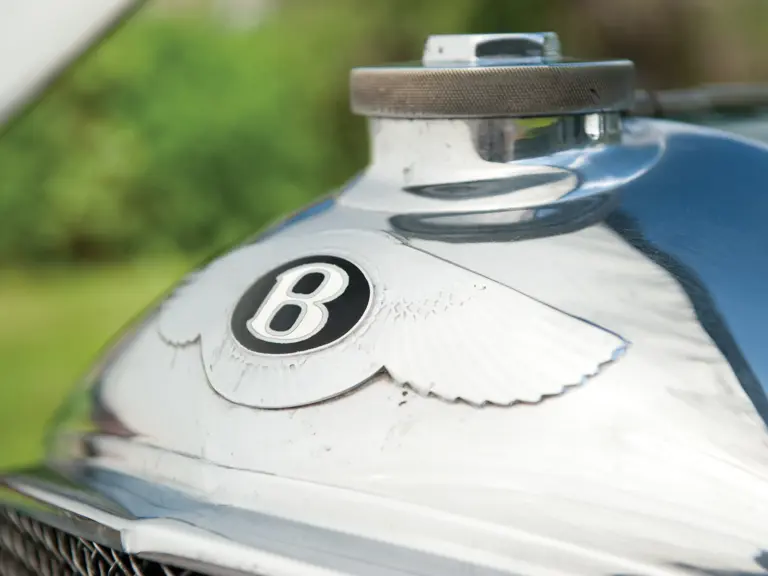
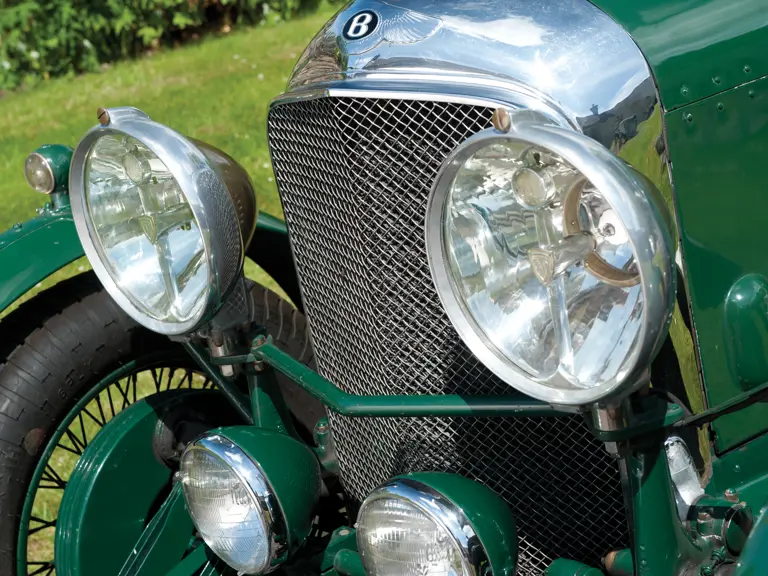
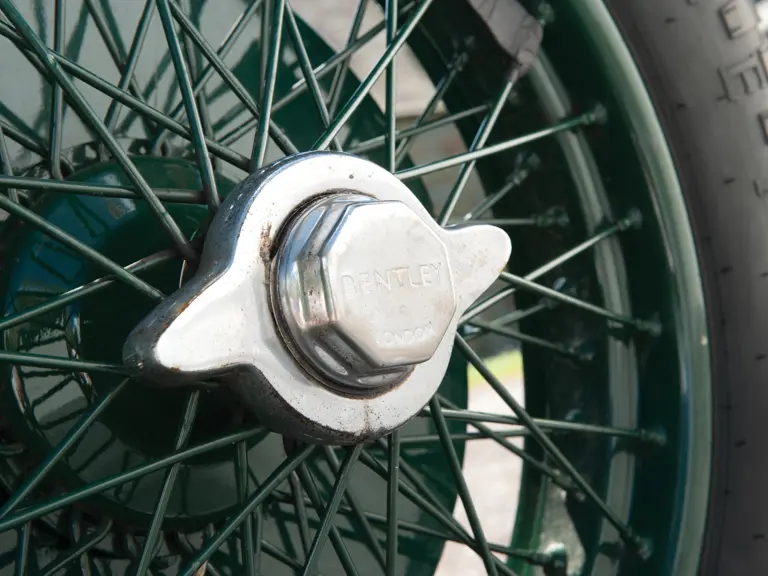
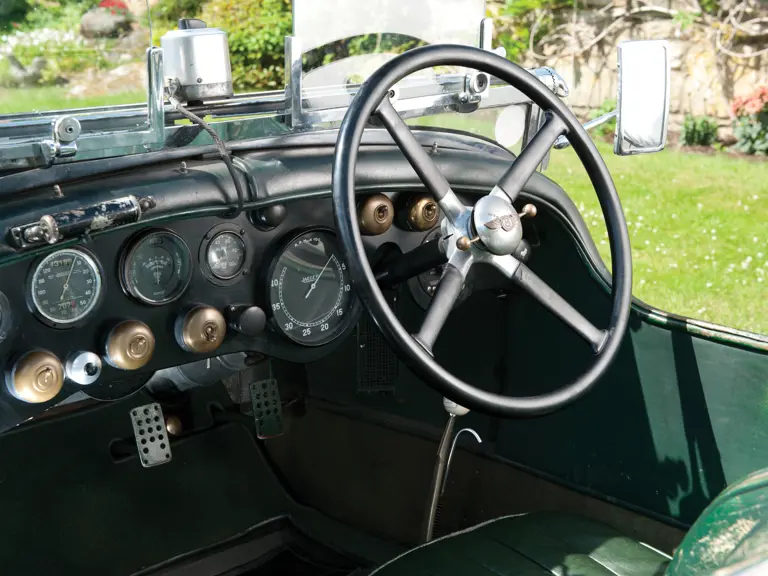
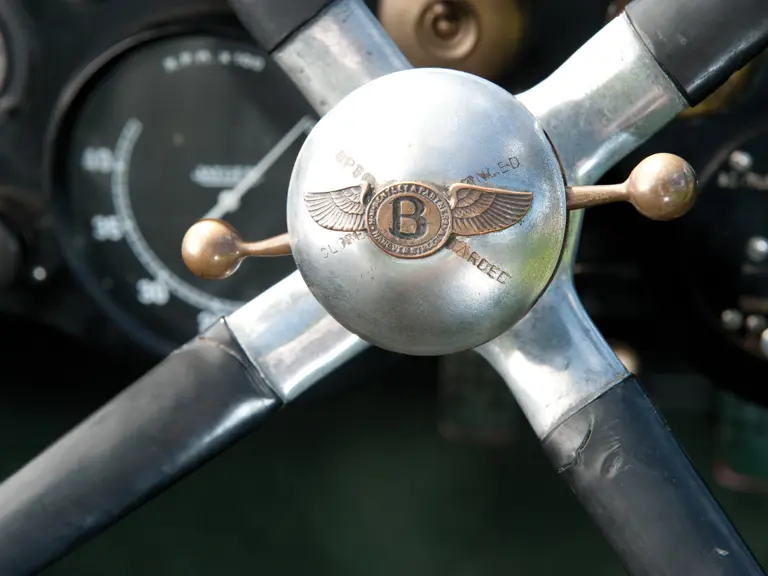
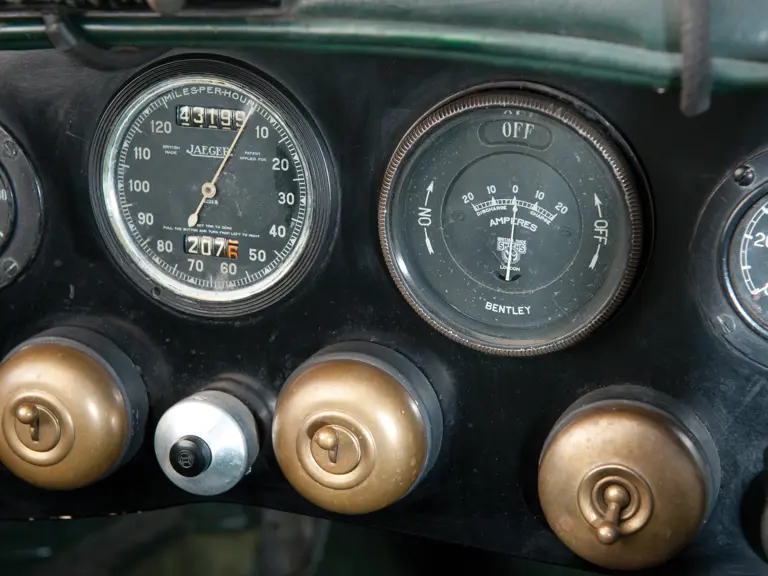

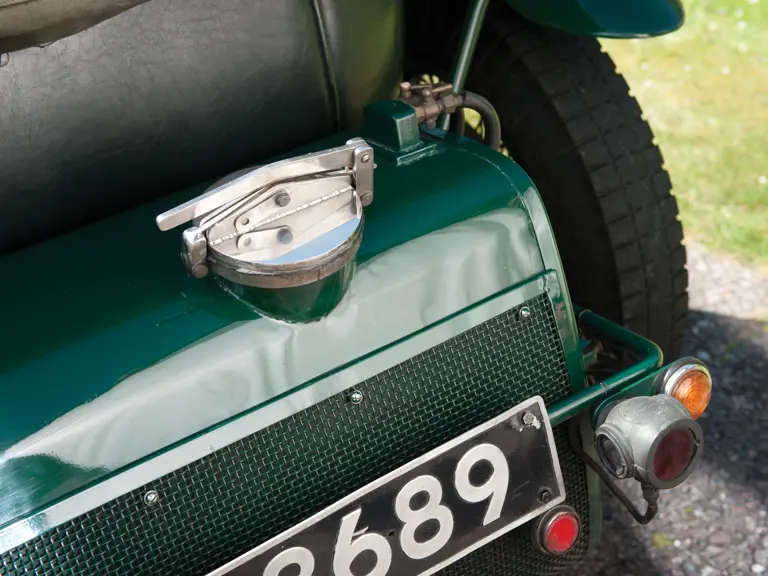
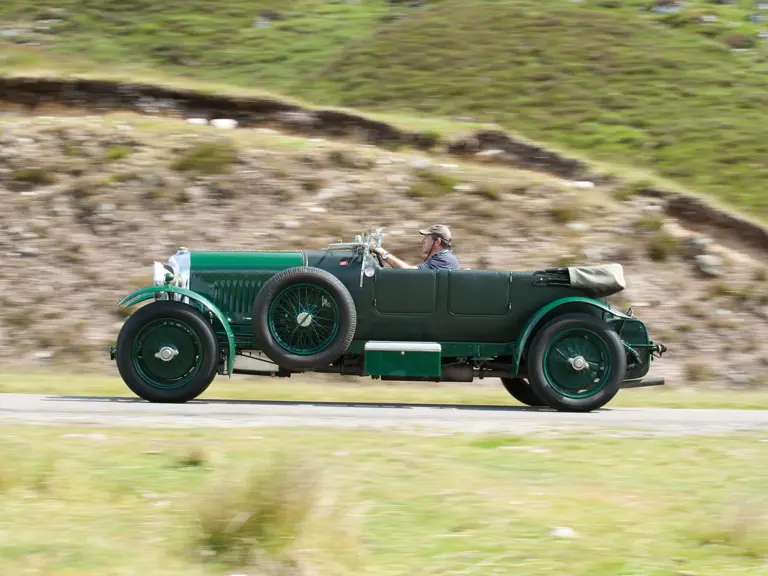
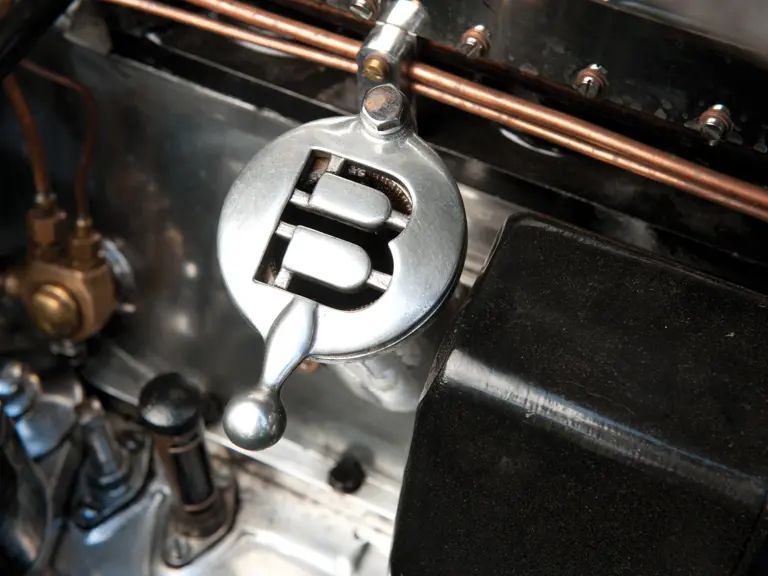
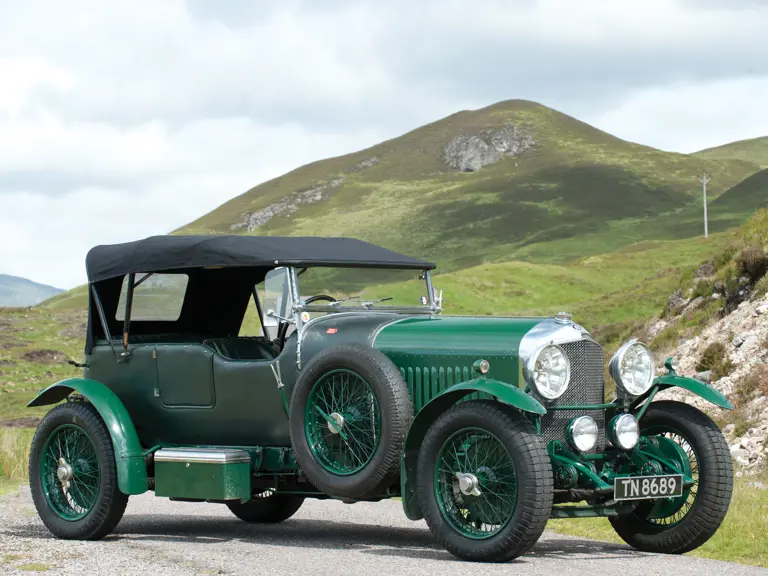



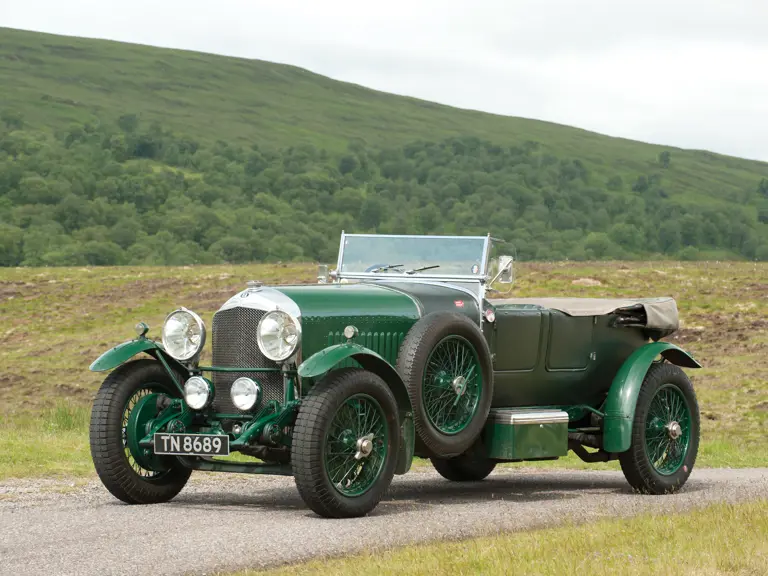
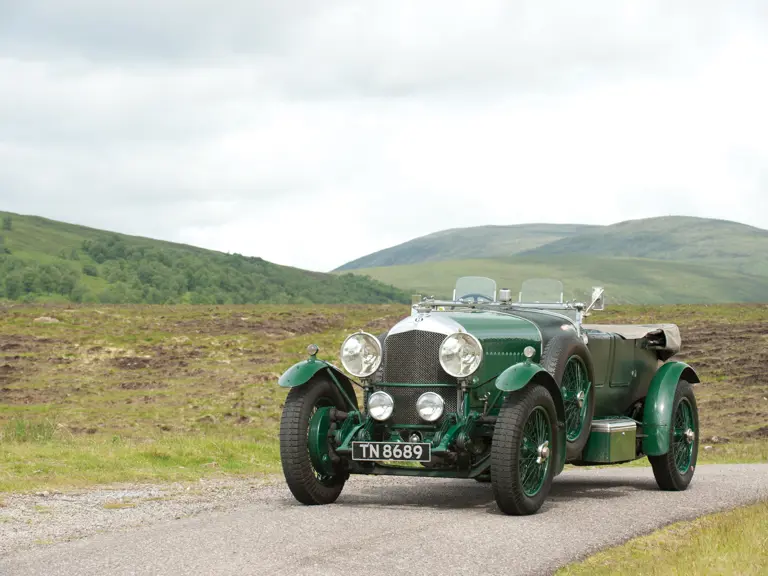
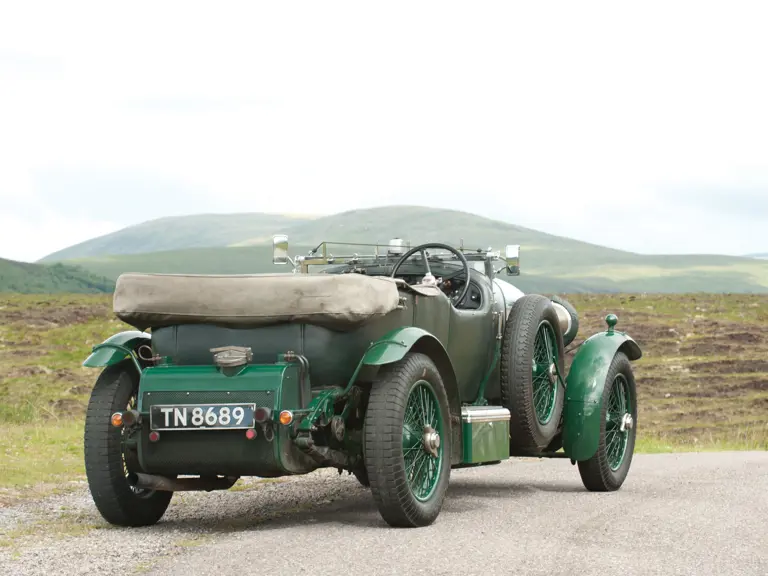
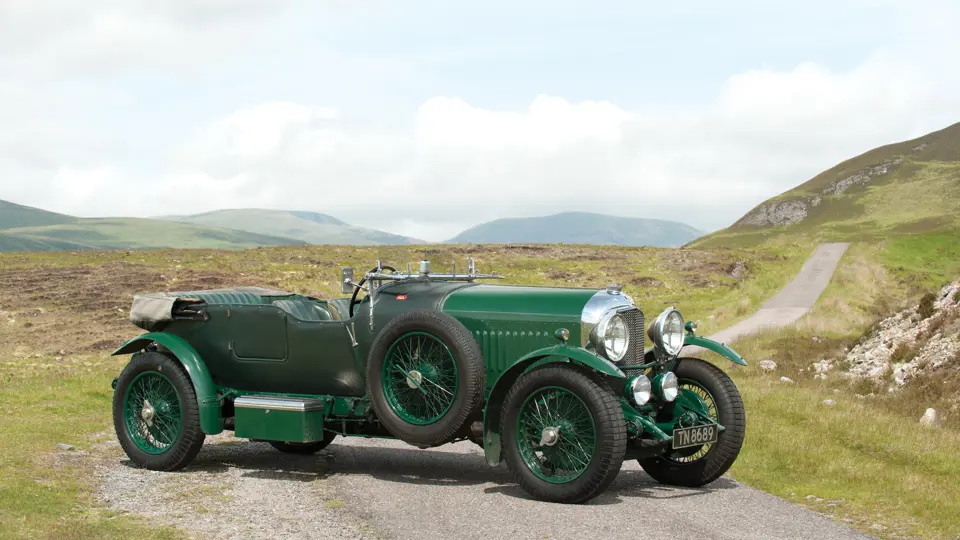
 | London, United Kingdom
| London, United Kingdom
